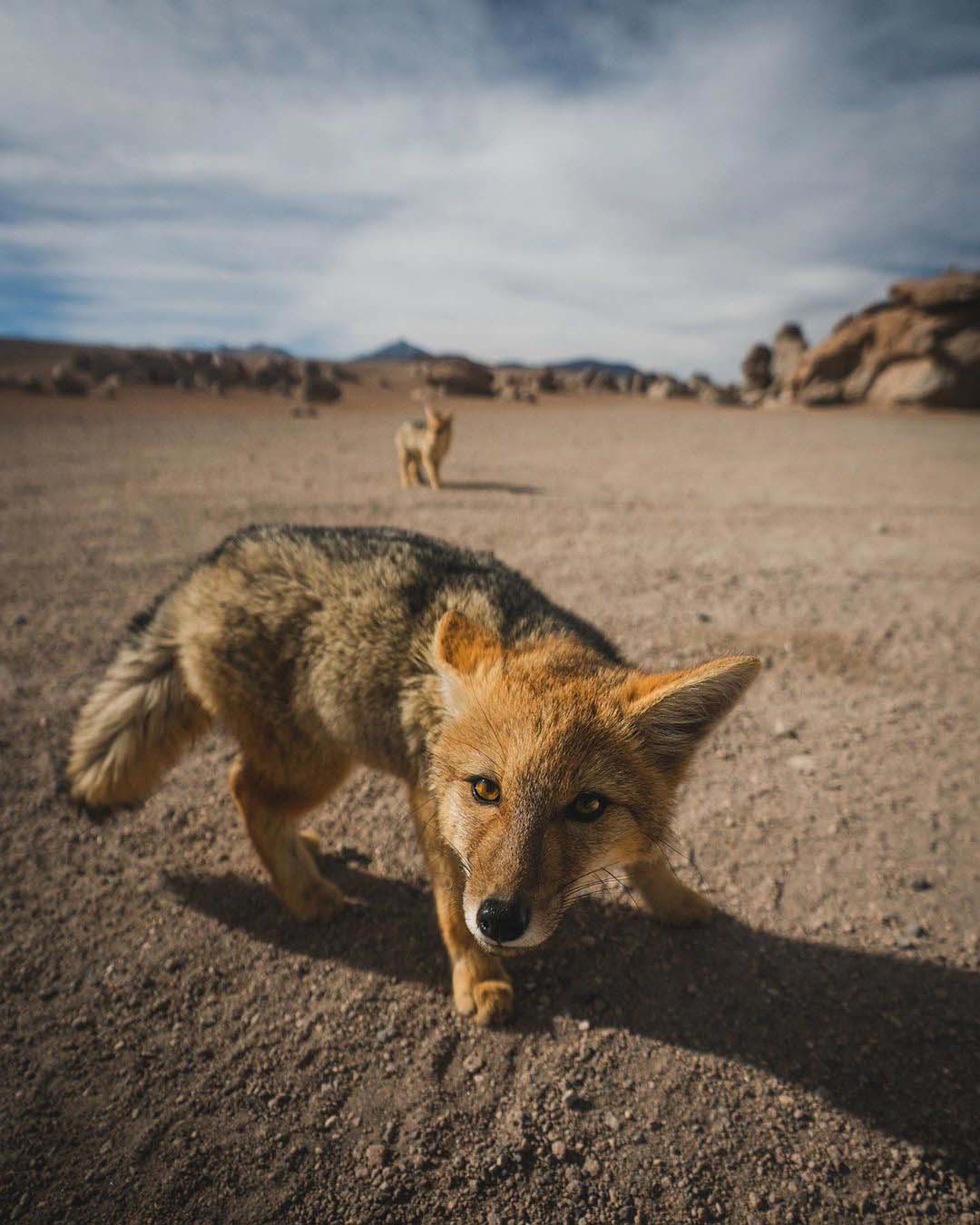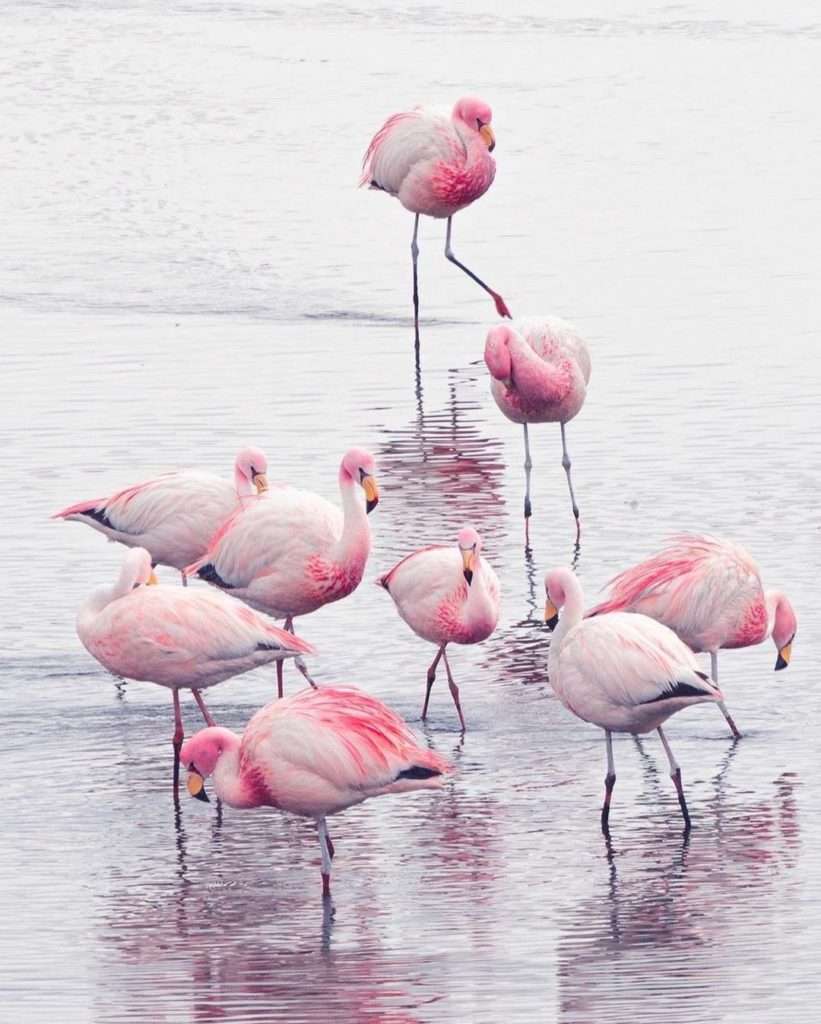Salar de Uyuni animals are likely be in the deserts and the lagoons. What many travelers may not know is that Uyuni also boasts a diverse array of wildlife. Home to dozens of species of birds, mammals, and insects, Uyuni offers an unrivaled opportunity to witness some of the world’s most magnificent creatures up close and personal. Part of this adventure would be to go and watch these beautiful animals like a safari ride. Meaning that along the way we can discover the animals in Los Andes or the “Altiplano”. Where we are at 4000 to 6000 meters above the sea level.
Table of Contents
The animals we are most likely to appreciate are:
- Llamas: Bolivia is the country with the largest population of llamas in the world! They are known for their wool and there are different species of them. Llamas are typically used as pack animals by locals due to their strength and ability to carry large loads over long distances for several days without stopping for food or rest. Despite being domesticated animals, wild llamas still roam free across various parts of Uyuni’s landscape in small herds.
- Flamingos: This type of animal can be found in Laguna Colorada, this stunning blood red lagoon provides a unique habitat to three of the world’s six species of flamingo , witch are: Chilean, Andean and James’. It’s here where these majestic birds feed on its supply of plankton while creating a surreal landscape like no other. The presence or absence of these spectacular birds depends on water levels in Laguna Colorada. When water levels rise too high or drop too low they will move elsewhere with their flocks in search of more favorable conditions.


Other species of animals
Other animals that you could see during this 3-5 days tour include, a variety of other mammals living throughout Uyuni’s terrain including rodents like rabbits (called vizcachas), foxes, alpacas, andean cats and birds. Uyuni also plays host wide variety bird species, highlighting importance of conservation efforts protecting these vital species and preserving future generations.


The most dangerous animal within this ecosystem will be Puma, but as they tend to live isolated it’s unlikely you’ll spot one on your adventure.
All animals are really important in this ecosystem, providing unique opportunities to observe nature’s beauty up close while learning about these animals’ behavior ecology & conservation efforts currently underway to protect them.
Recommendations for Salar de Uyuni Animals:
In case of seeing Flamingos, please don’t get too close to the lake’s shore when taking pictures, especially during the breeding season. Flamingos are highly sensitive to disturbances at this time, which can lead them to abandon their nests. They will also be very grateful if you don’t leave rubbish and avoid washing your utensils in the lakes using detergents after having your “picnic”.
It’s important to remember that you do not have to feed Salar de Uyuni animals, there are many reasons why human food is not healthy for wild animals and they don’t need our scraps to survive.
Wild animals have specialized diets and can even die when fed wrong foods. In addition, they can’t tell the difference between food and wrappers or foil, making them susceptible to getting sick from ingesting these items.
Not only that, but feeding animals in Uyuni also carries public health risks. By bringing too many animals into one place we increase the risk of disease transmission amongst humans and other wildlife. Habituated animals who cannot differentiate people as a threat may become aggressive, leading to their destruction in order to protect both property and people’s lives.
Not to mention how this habit disrupts the animal’s natural behavior by teaching them to depend on us instead of their environment for sustenance.
Overall, it’s not safe for any species involved if you feed wild animals, it’s better for everyone if we keep our food (and wrappers) out of their reach!
Finally…
Uyuni is a unique and diverse region when it comes to wildlife. Visitors have the chance to learn about animal behavior, ecology and conservation efforts in progress to protect all of these incredible creatures for future generations. Experience their natural habitat; also discovering & living an experience inside flora & fauna that’s not very common all around the world like seeing different birds species all around Bolivian territory! Are you ready for this adventure?
Explore all the Uyuni tours:
- Uyuni 1 Day tour (Private)
- Uyuni 2 day tour (Private)
- Uyuni 3 day tour (Private)
- Uyuni 4 day tour (Private)
Looking for more inspiration? Visit our gallery: Visit South America Instagram.



